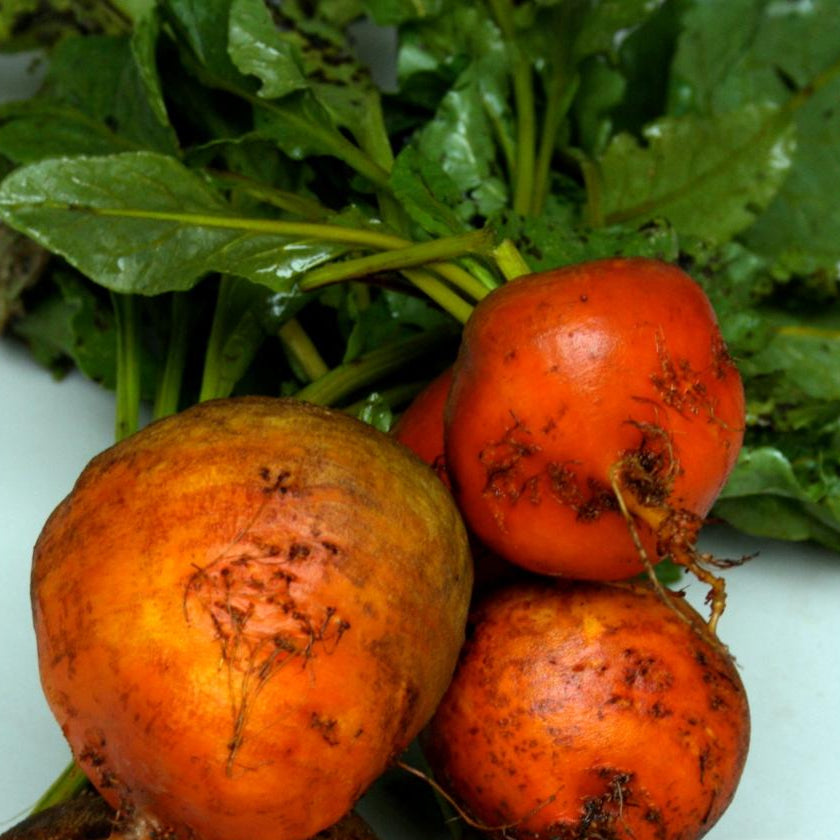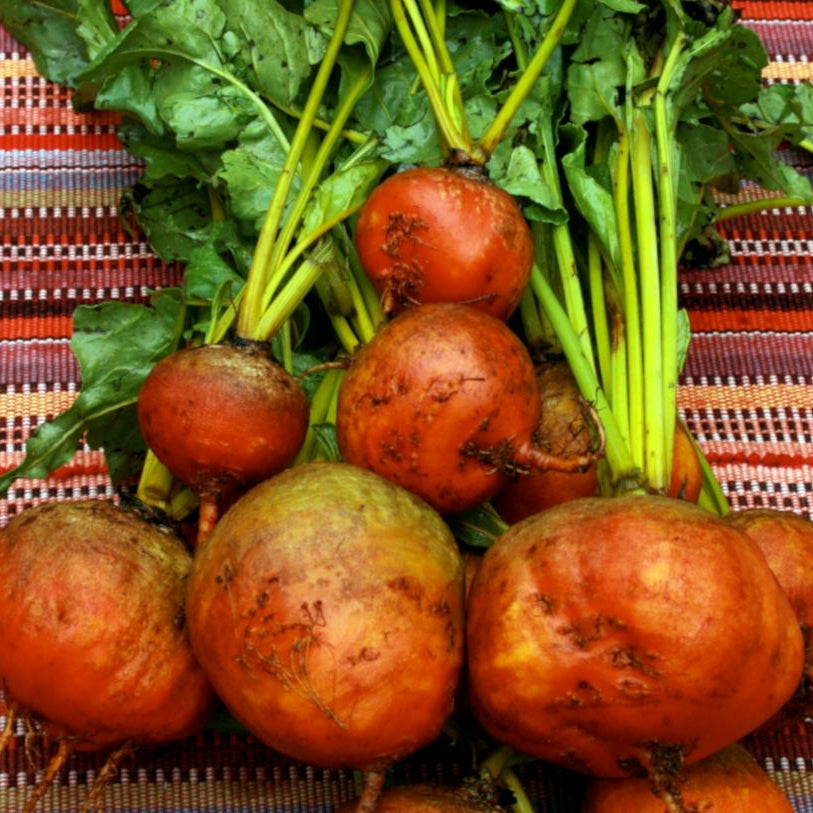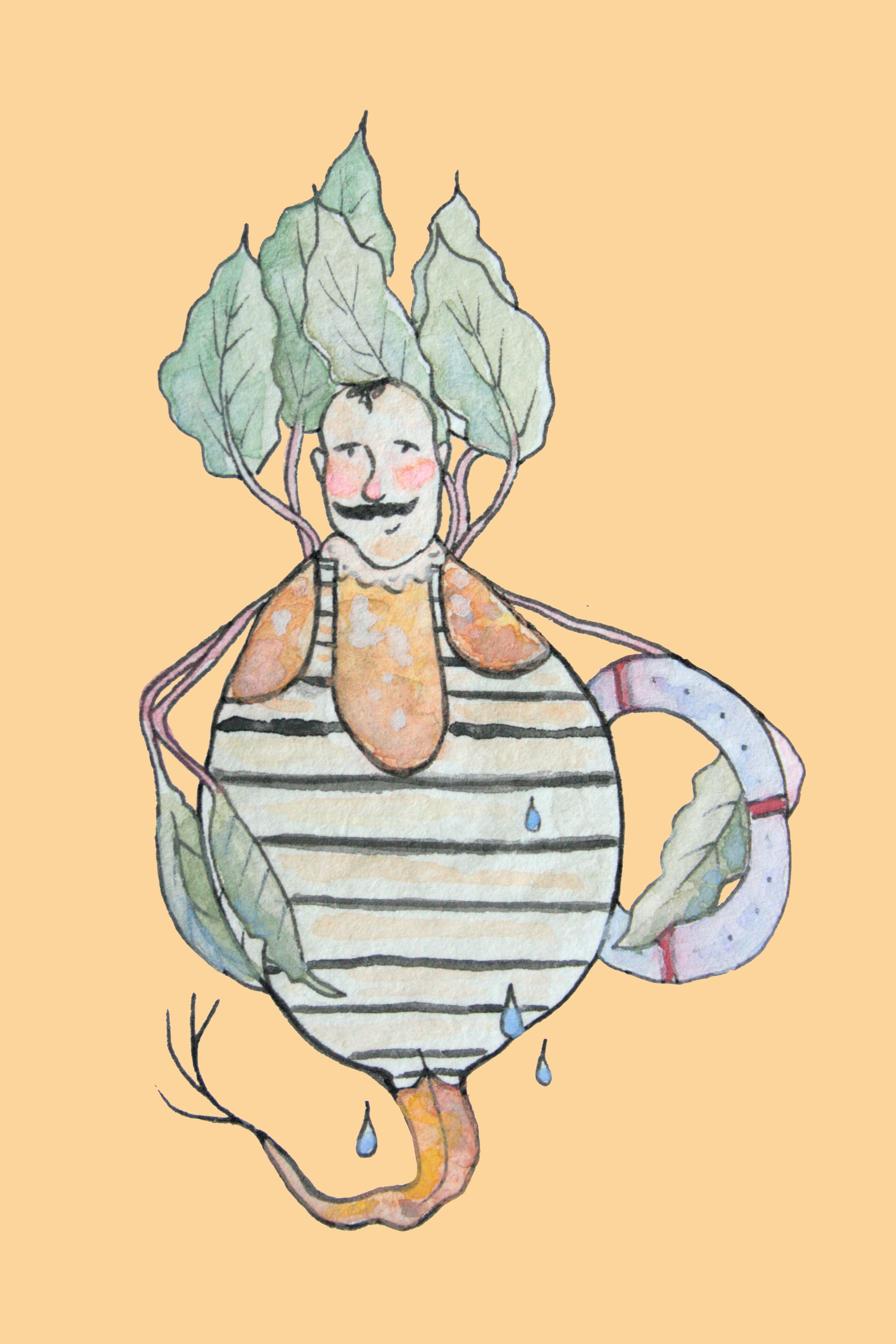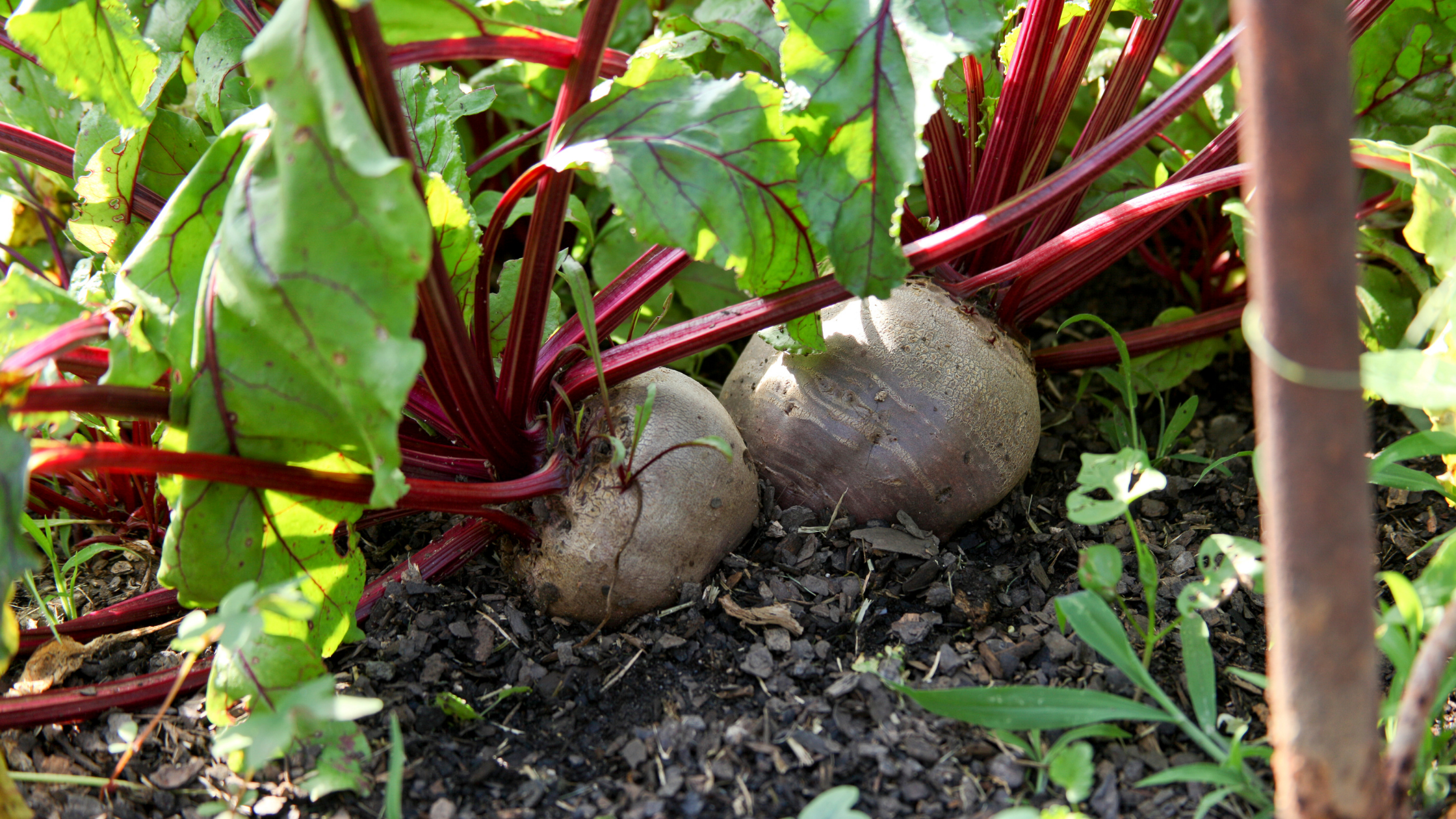Sow True Seed: Our Generative AI Policy
Sow True Seed will never use generative AI in any art, copywriting, blog posts, or advertisements of any kind. Our human-first business will continue to be just that - human...
Fresh new look, same great seeds - read all about our brand refresh on our blog!
Free Shipping on All Orders - All December Long!



The beet for people who think they don’t like beets! These vibrant, sunset-yellow roots are extra sweet, tender, and mild-flavored compared to classic dark red beet varieties. One of the best varieties for juicing or eating raw. Added bonus: their light-colored juice doesn’t stain everything in the kitchen when you cook with them! Plus, the light green tops with beautiful golden veins are good eating too.
2 gram packet contains a minimum of 110 seeds.
Minimum Seeds per Packet: 110
Packet Weight: 2g
Planting Season: Spring, Fall
Sowing Method: Direct Seed
Seed Depth: 1/2"
Direct Seed Spacing: 1-2"
Soil Temperature: 40-85 ℉
Days to Sprout: 5-17
Mature Spacing: 3-5"
Sun Requirement: Full Sun
Frost Tolerance: Frost Tolerant
Days to Harvest: 55
Beets are a cool weather crop and do best when planted for a spring or fall harvest. They can germinate in soil temperatures up to 85 degrees Fahrenheit, however, the warm weather can cause beets to become woody and bitter. If you are on top of harvesting - and are okay with harvesting smaller beets (before they become too tough), in many zones beets can be sown throughout the summer as well. In the spring, beet seeds can be planted as soon as the soil is workable - typically four to six weeks before the last frost. In the fall, they can be sown four to six weeks before the first frost.
Beets are extremely frost tolerant and will germinate in temperatures as low as 40 degrees Fahrenheit. They can also withstand frost fairly far into the winter once established. Beets are an excellent early or late crop in the cool weather garden. To extend your season even longer, utilize cold frames or row cover to protect tender seedlings from frost. Beets can be sown in successions every two to three weeks throughout the growing season for a continuous harvest.
Beet seeds can be planted in a spot with full sun to partial shade. If there is too much shade, your crops may put more work into producing foliage than large, impressive roots. However, beet greens are delicious so it won’t hurt to end up with a few extra of those too! They will love rich, well-draining soil. Before planting, soil can be amended with plenty of compost and organic matter, especially if you deal with clay soils like we do here in zone seven. We recommend rotating all of your crops. Try to select a location that hasn’t had other beets in it in the last two to three years.
Beet seeds should be planted in an area with full sun (or partial shade, but remember these conditions will produce largely beet greens rather than roots). Like other roots, beets appreciate fertile, loose soil that is well-draining and evenly moist. Ahead of planting, you can amend the soil with compost or leaf mulch.
Like most root crops, we typically recommend direct seeding your beets in the garden. Some growers do choose to transplant their beets but this can disturb the root and cause undue stress. However, it works very well for certain growers so try both and see which you prefer! Plant your beet seeds ½ inch deep and one to two inches apart. As they germinate, in the next week or two, thin the seedlings until they are three to five inches apart. Keep the seedlings to throw on your next salad or sandwich like microgreens!
Like most seeds, beets need consistent and regular watering in order to germinate effectively. We recommend watering everyday until germination. After germination, beets will benefit from at least an inch of water per week.
Harvesting beets is not complicated but there are some things to keep in mind when pulling up these root crops. They can be harvested for eating at any stage. The larger they are, the deeper they are, and the more difficult it can be to pull them from the ground - depending on how compacted your soil is.
Beets produce pretty hefty foliage so you can typically pull them from the ground with your hand around the crown of the plant. For larger, more mature plants, consider using a digging fork inserted in the soil at least six inches away from the plant. Lift the soil around the plant, which will loosen the soil and make it easier to pull the beet from the ground. Be sure to harvest all of your beets before it gets too hot in the spring (when they will become woody and bitter) or too cold in the fall (not too many 20 degree nights in a row).
Read more about how to grow beets on our blog!
Beets (Beta vulgaris) are wind pollinated, and should be isolated from other varieties of beets and Swiss chard (which is the same species) by one mile to ensure pure seed. They are biennial, meaning they must overwinter in order to flower in their second year. In warm climates, this can be accomplished by simply leaving the beets in the ground and covering them with a generous layer of mulch to keep the roots from freezing.
In colder climates where the ground freezes, the roots should be brought inside for storage and then replanted outdoors in spring. To store roots for replanting, cut the tops back to about 3 inches, pack the roots in sawdust or sand, and store them in a cool location with moderate humidity, such as a basement or root cellar. Replant them once the soil is workable again in spring, burying the roots so that the crown is at the soil surface. Save seed from at least six different plants to ensure good genetic diversity, and make sure to select the ones with the best root color, shape, and vigor.
Sow True Seed will never use generative AI in any art, copywriting, blog posts, or advertisements of any kind. Our human-first business will continue to be just that - human...
Brussels Sprouts can be grown in all areas of the United States. Their long time to maturity and sensitivity to nutrient imbalances have given them a reputation for being difficult....
Sometimes with beets it seems that people love them or… don’t love them. But we are of the belief that if you think you don’t love beets - you just...



